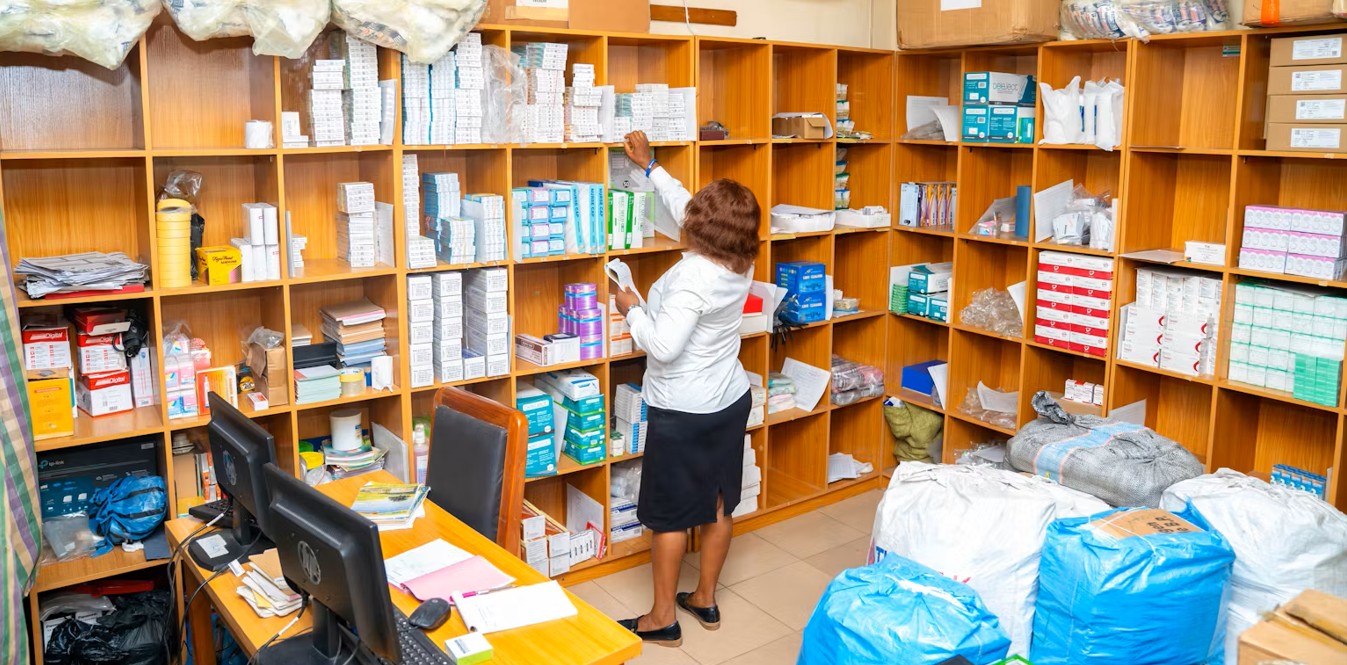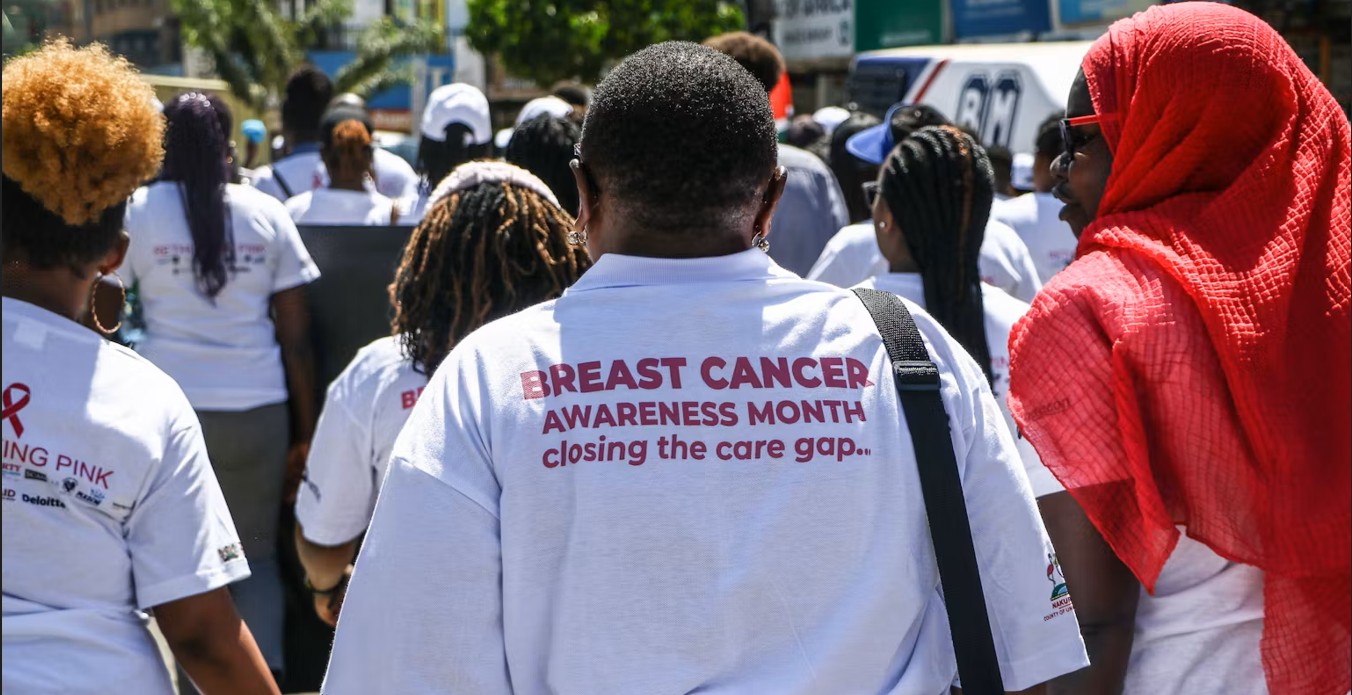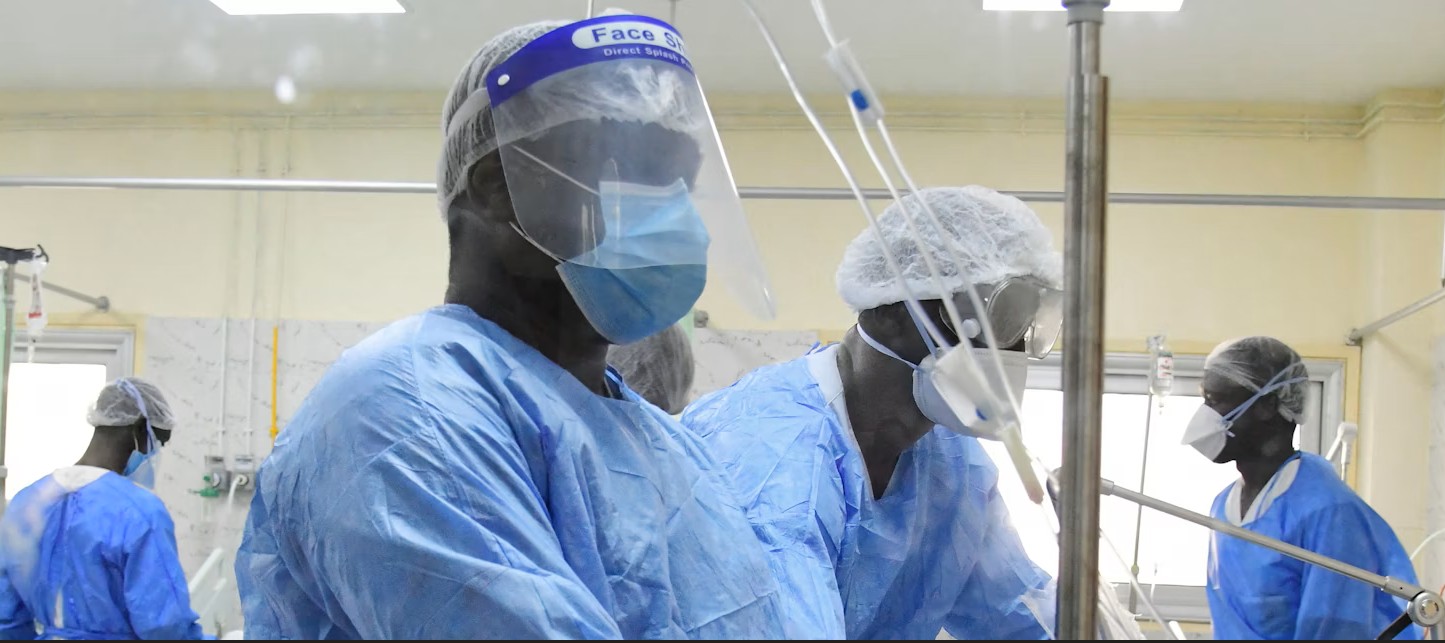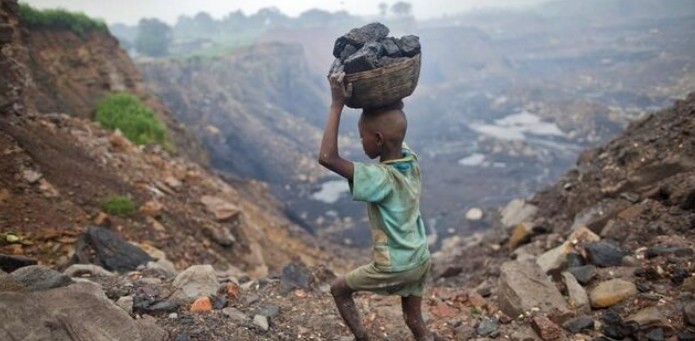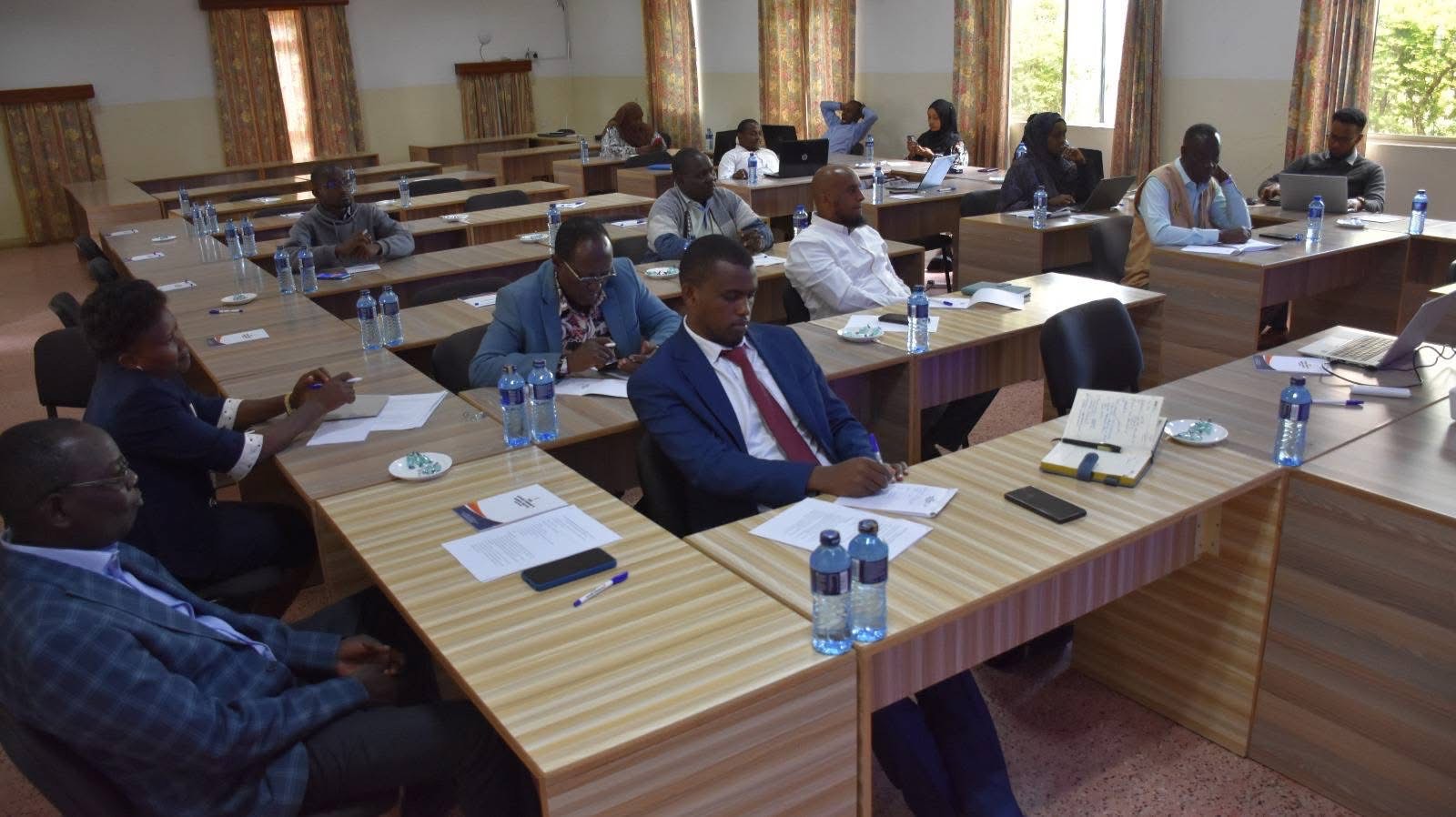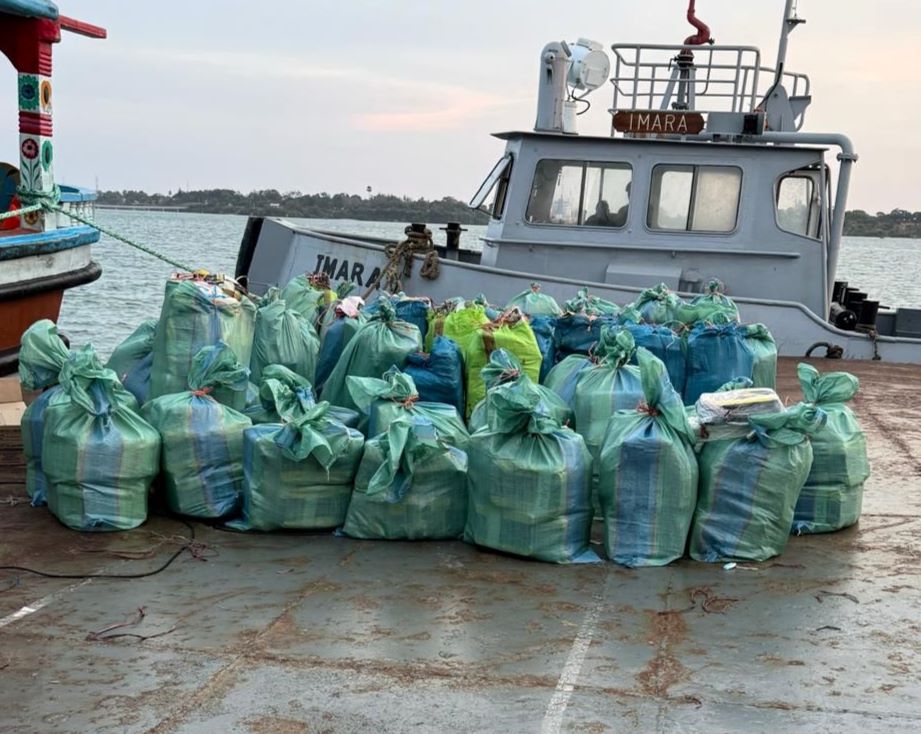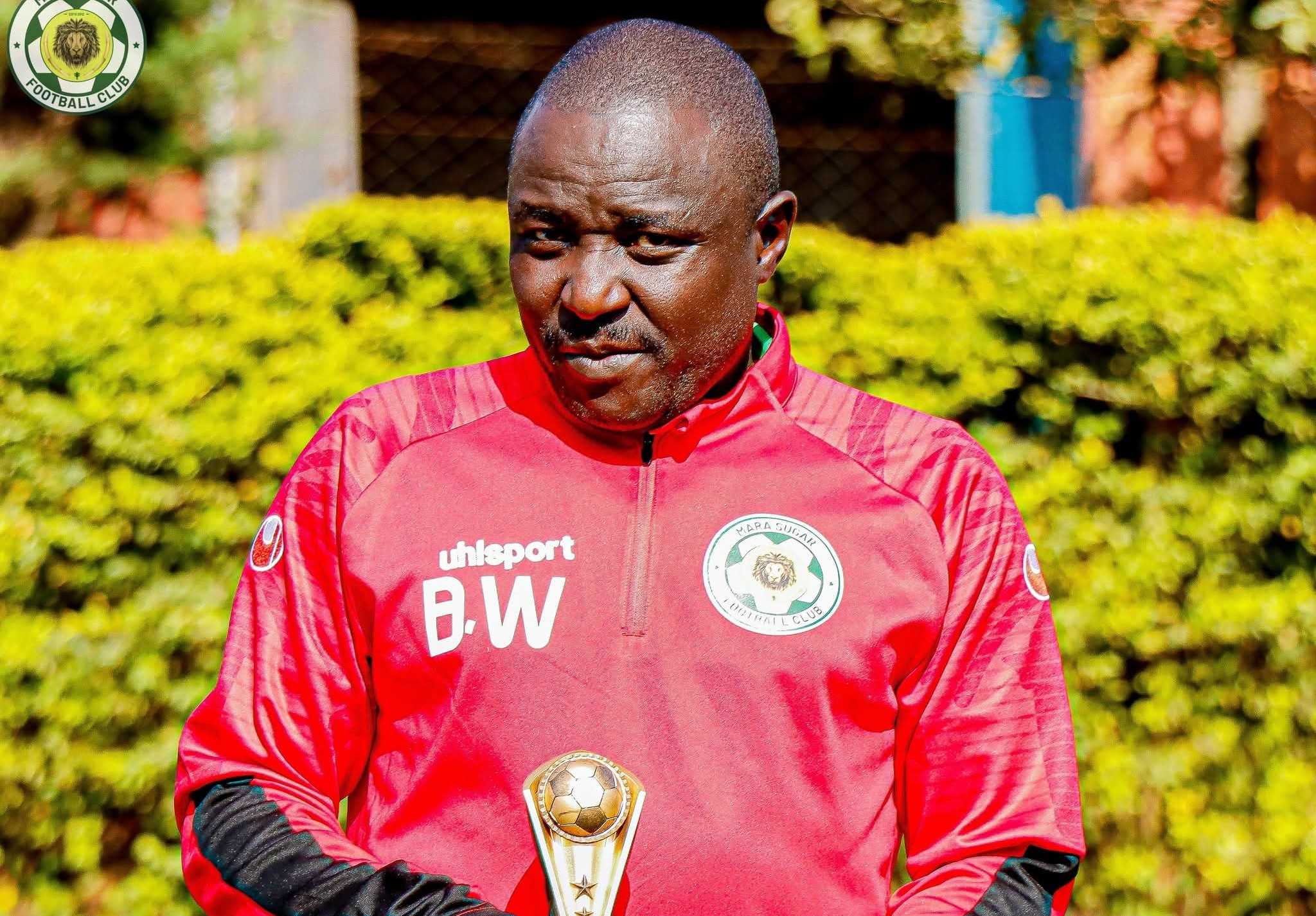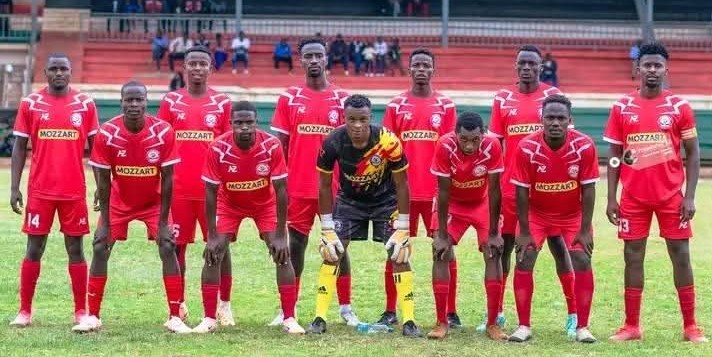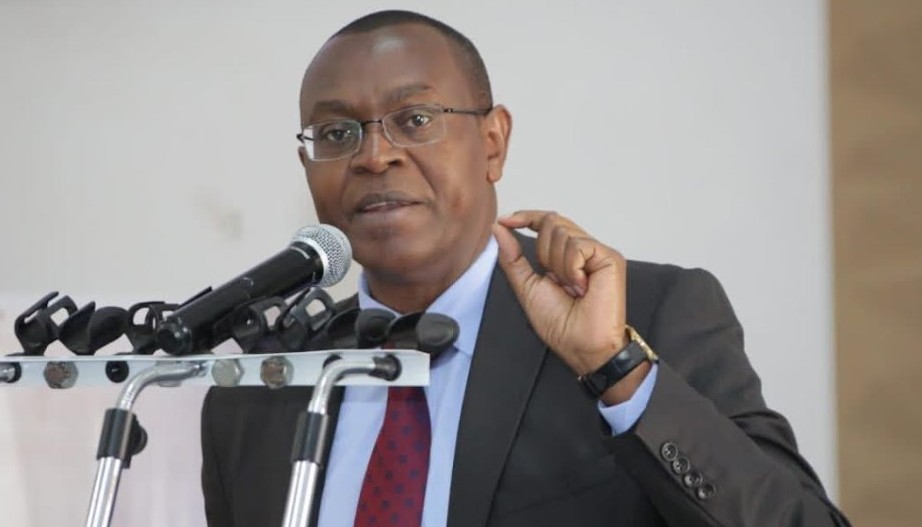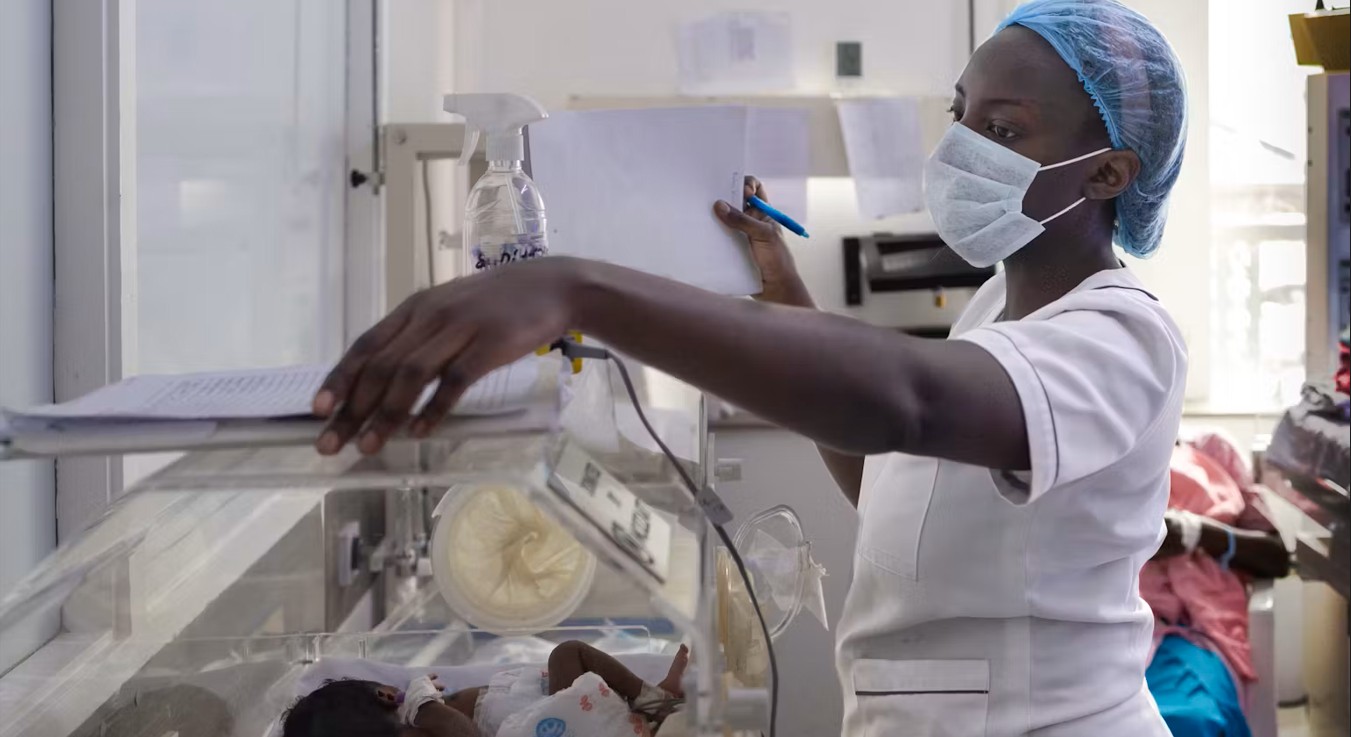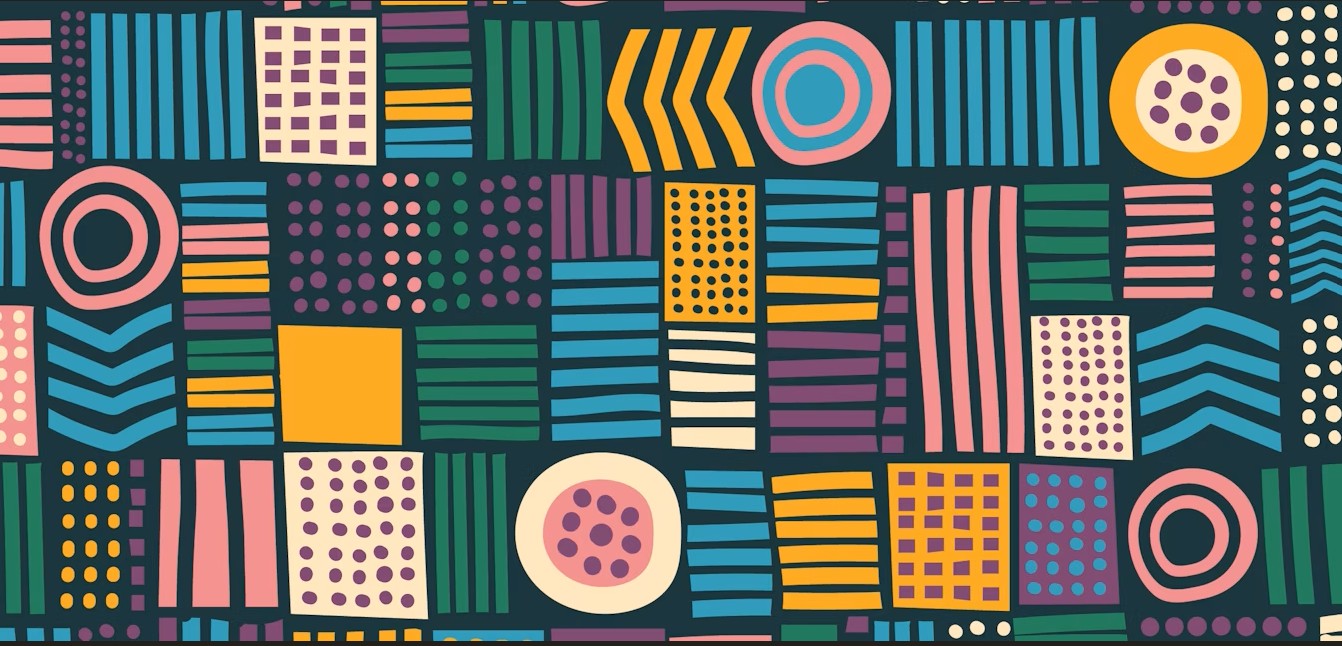World’s hunger watchdog warned of catastrophe in Sudan; famine struck anyway
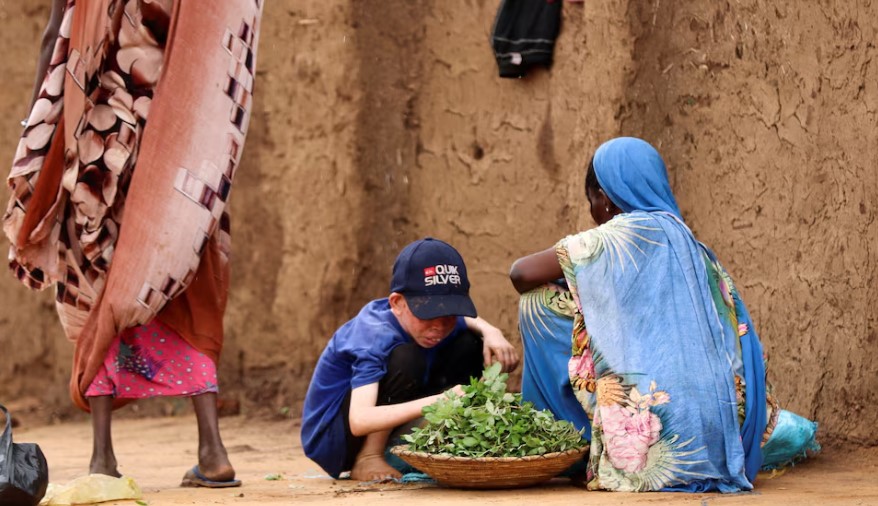
In the Zamzam displaced persons’ camp, children were dying for months before it was found to be in famine.
A global warning-and-response system is supposed to prevent the kind of catastrophe unfolding at Sudan’s Zamzam camp, where famine threatens the lives of an estimated 500,000 people uprooted by decades of civil war.
Vast and intricate, the system binds together several arms of the United Nations, humanitarian groups, rich donor nations and hundreds of technical experts who parse data for signs of starvation. And it sends billions of dollars of aid annually to needy nations.
More To Read
- Sudan war: Three children dying every day as hunger and diseases devastate besieged El Fasher
- Over 30 million people in Sudan in need of humanitarian assistance: UN agencies
- 15,000 in Gaza await urgent medical evacuation amid fragile ceasefire
- Suicide drones struck Sudan's capital Khartoum, forcing airport closure amid escalating attacks
- IOM urges immediate aid as Khartoum returnees surpass one million
- RSF drone attacks hit Khartoum Airport ahead of planned reopening
But in Zamzam – and in many other hunger spots around the world – this safety net is failing.
At the core of the system is the Integrated Food Security Phase Classification (IPC).
Created to help manage a 2004 hunger crisis in Somalia, the IPC evolved into an international framework that uses data to analyse food insecurity. It is meant to help prevent famine by providing donors and humanitarian organisations with unbiased information which they need to make strategic decisions about how to deploy aid.
The framework is overseen by 19 large humanitarian aid and intergovernmental organisations, known as global partners. Funded by Western governments, the IPC monitors food insecurity in more than 35 countries and publishes periodic evaluations.
To produce those reports, the IPC relies on a consortium of non-governmental aid organisations (NGOs), government ministries and technical analysts.
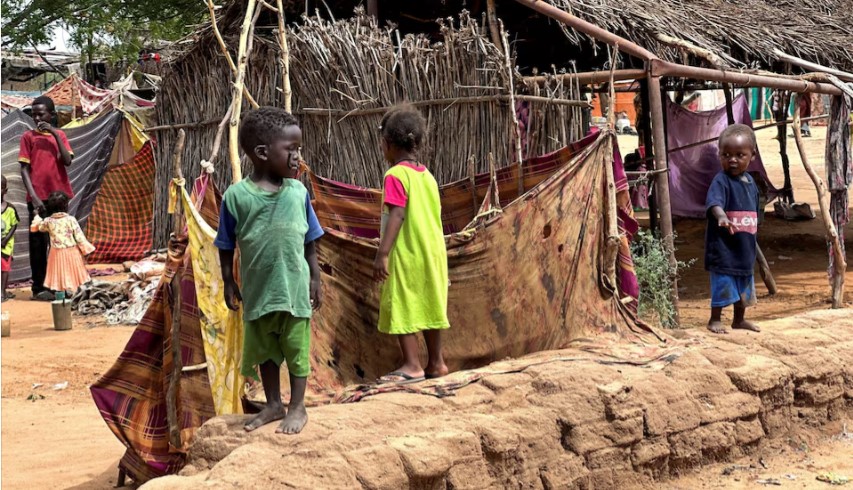 Displaced Sudanese children stand at Zamzam camp in North Darfur on August 1, 2024. (Photo: File/REUTERS/Mohamed Jamal Jebrel)
Displaced Sudanese children stand at Zamzam camp in North Darfur on August 1, 2024. (Photo: File/REUTERS/Mohamed Jamal Jebrel)
Food insecurity phases
The IPC’s five-phase classification system charts food insecurity on a progressive scale, from minimal at Phase 1 to catastrophic at Phase 5. The IPC recommends action at every phase. But to ward off food emergencies and famine, it says urgent humanitarian response is needed beginning in Phase 3, which is considered a crisis.
In June, the IPC said more than 750,000 people in Sudan were facing catastrophic hunger, Phase 5 on its food insecurity scale. Worldwide, 1.9 million fall in that category, more than double the 2023 number, according to the Global Report on Food Crises, produced by a food-security analysis consortium.
Zamzam has had people at all phases of the food insecurity scale.
The IPC also assigns the area an overall classification. In June, the IPC placed Zamzam in Phase 4. In August, it was determined to be in famine, Phase 5.
The inability to prevent famine in Sudan represents a “collective failure, absolutely” of the political and humanitarian institutions that are supposed to protect people, Jose Lopez, head of the IPC, told Reuters.
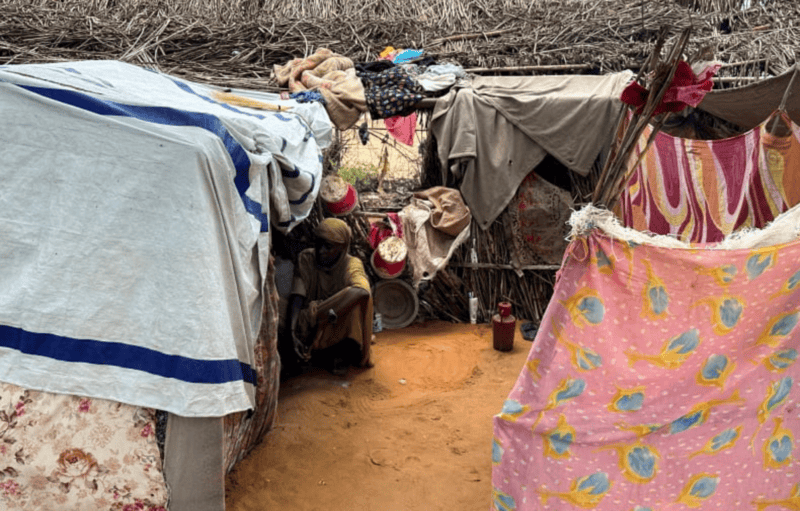 Sudanese woman rests inside a shelter at Zamzam camp, in North Darfur, Sudan, August 1, 2024. 9reuters)
Sudanese woman rests inside a shelter at Zamzam camp, in North Darfur, Sudan, August 1, 2024. 9reuters)
How conflict disrupts the hunger watchdogs
The IPC’s analyses, including famine determinations, use rigorously vetted data on crop yields, food prices, malnutrition and other factors scientifically linked to food security.
A team of statisticians, health workers and aid organizations is supposed to analyse the data and produce regular reports. The team is typically headed by the government of the country being assessed.
But in Sudan, the war has upended data collection. Violence, military checkpoints and movement restrictions make it unsafe or impossible to gather information in many areas, and the data that’s harvested sometimes fails to meet the IPC’s standards.
Similar problems are tripping up the IPC in other troubled lands it monitors, including Gaza, Yemen and Ethiopia.
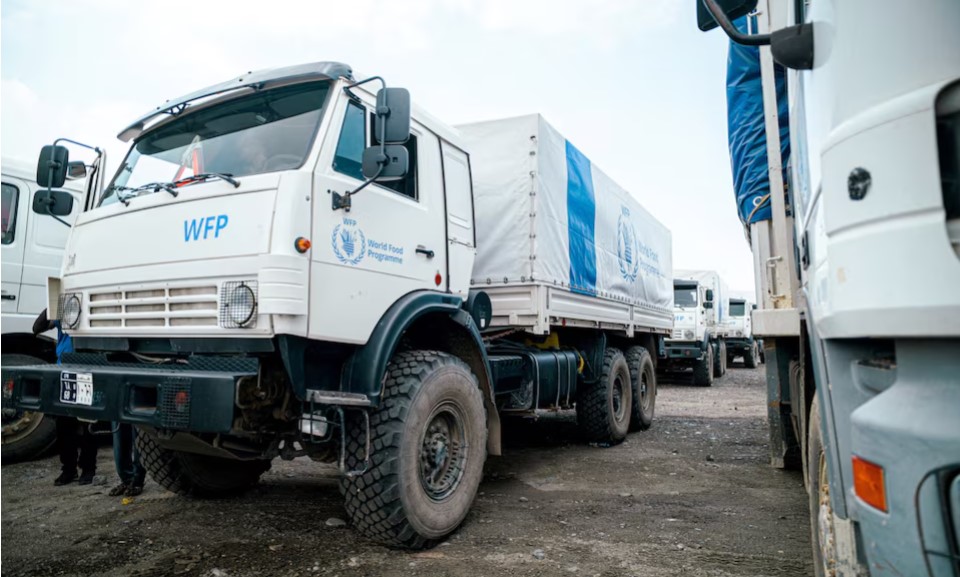 WFP trucks carrying aid from Port Sudan to Sudan on November 12, 2024, after Sudanese authorities extended a three-month approval to use the Adre Border crossing with Chad to reach. (Photo: File/WFP/Abubakar Garelnabei/Handout via REUTERS)
WFP trucks carrying aid from Port Sudan to Sudan on November 12, 2024, after Sudanese authorities extended a three-month approval to use the Adre Border crossing with Chad to reach. (Photo: File/WFP/Abubakar Garelnabei/Handout via REUTERS)
A perplexing finding
Starvation is making a resurgence as a method of warfare, and so the IPC urgently needs to strengthen its understanding and analysis of the links between conflict and famine, said Tufts University scholar Daniel Maxwell, who sits on the IPC’s Famine Review Committee.
Four months into the civil war in Sudan, the IPC issued a report that described the many ways conflict was worsening food insecurity across the country. It cautioned that war would make things worse, affecting “all aspects of food security, pushing further numbers of people, especially internally displaced populations, into acute food insecurity”.
The August 2023 report raised the severity rating of conditions in al-Fashir, the state capital of North Darfur, and the surrounding area, which includes Zamzam, to Phase 4.
Just one step away from famine, a Phase 4 finding is supposed to sound an international alarm and trigger urgent action by donors and aid agencies to keep people alive and prevent a freefall into famine.
But as war raged across Sudan, the report contained a perplexing contradiction. It predicted that food security would improve in the months ahead, from Phase 4 to Phase 3. It surmised that the coming millet and sorghum harvest would mitigate food shortages, along with the “opening of roads and markets and supply chains of food and non-food commodities.”
The IPC’s methods for analysing food security have focused more on weather and economic conditions and have not adequately considered conflict, the leading driver of famine for more than two decades, review-committee member Maxwell said. He said that the IPC has been working to address this.
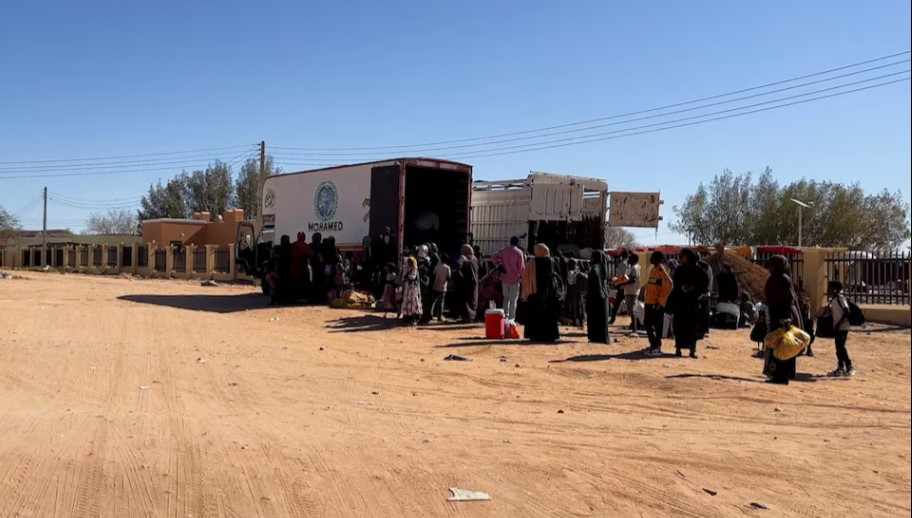 Sudanese families prepare to ride on trucks while on their way to Egypt through the Qustul border, after the crisis in Sudan's capital Khartoum. Photo: (File/REUTERS/Heba Fouad)
Sudanese families prepare to ride on trucks while on their way to Egypt through the Qustul border, after the crisis in Sudan's capital Khartoum. Photo: (File/REUTERS/Heba Fouad)
New conflict analysis guidance
In October, the IPC issued new guidance on how to conduct more rigorous conflict analyses, urging working groups to consider not just warfare but also other armed conflict, such as gang violence. The guidance notes many ways conflict can drive food insecurity, such as impeding access to food, causing food prices to skyrocket and disrupting crop production.
After the IPC’s optimistic projection in August 2023, aid groups ended the year having raised about half the $2.6 billion they estimated they needed for relief in Sudan, according to UN data that tracks the flow of humanitarian funding.
In the following months, conflict drove thousands more Sudanese from their homes and farms. The fighting obliterated markets and smashed supply chains. The agricultural harvest was below average. Starvation in the region increased in severity and scale, and Zamzam plunged into famine.
The main providers of aid, UN relief agencies, won’t cross borders without the approval of Sudan’s army-backed government, which the UN recognises as sovereign. That has made it hard to get aid to Darfur, where the UN lacked government permission for many months to deliver aid from a key border crossing in the Chadian town of Adre.
 Families flee RSF advances in Sudan's El Gezira state, on Sennar Road in the city of al-Dinder, Sennar state, Sudan, June 12, 2024. (Photo: Reuters)
Families flee RSF advances in Sudan's El Gezira state, on Sennar Road in the city of al-Dinder, Sennar state, Sudan, June 12, 2024. (Photo: Reuters)
As conflict intensifies, so does hunger
Hunger and malnutrition have increased across Sudan since 2023 when the SAF and the paramilitary RSF began battling for control.
Conditions deteriorated in response to the fighting. By December, the RSF had consolidated control of much of Darfur and began to focus on al-Fashir, the last major city in the region still controlled by the SAF and allied forces.
The violence caused thousands more to flee to nearby Zamzam.
In February, the aid organization Médecins Sans Frontières (Doctors Without Borders, or MSF) announced its physicians had discovered alarmingly high levels of malnutrition and mortality there in a screening the previous month. Nearly 25 per cent of children were found to be acutely malnourished – higher than the IPC’s 15 per cent threshold for Phase 5.
The MSF findings were particularly ominous because food stocks are typically the highest and malnutrition lowest in Sudan after the December harvest. This meant Zamzam’s residents were already facing catastrophic levels of malnutrition before the “lean season” between harvests – from spring through summer when food is limited and hunger often increases.
In a country where data collection had become extremely difficult, the MSF survey offered the IPC concrete evidence that Zamzam was spiralling toward famine. It was an opportunity to issue a warning.
Instead, the survey became a flashpoint among members of the IPC’s analysis group, underscoring another way that the IPC’s protocols can undermine its work. As is typical, the national government headed the group. The IPC structures groups this way because government buy-in and support are important to relief efforts and long-term goals of improving food security.
The Sudanese government, however, is at war with the RSF. Aid must pass through areas controlled by the RSF to reach many of Sudan’s neediest citizens, including the starving population of Zamzam.
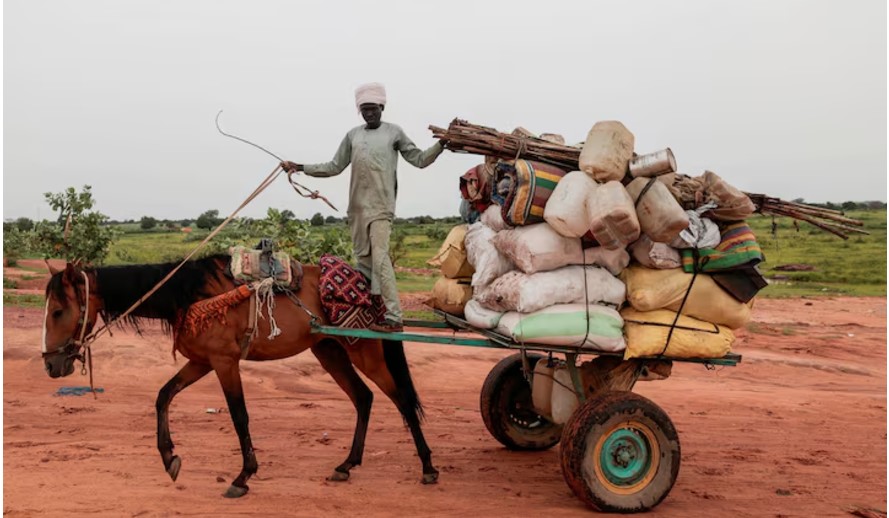 A Chadian cart owner transports the belongings of Sudanese people who fled the conflict in Sudan's Darfur region on August 4, 2023. (Photo: File/REUTERS/Zohra Bensemra)
A Chadian cart owner transports the belongings of Sudanese people who fled the conflict in Sudan's Darfur region on August 4, 2023. (Photo: File/REUTERS/Zohra Bensemra)
Blocked aid shipments
Both warring parties have blocked aid shipments, aid workers and Western diplomats say, each fearing the trucks would enable resupply of the other. For the same reason, the government has resisted a famine determination, diplomats say, aware that it would bring unwanted political pressure to improve the flow of aid to RSF-held areas.
A famine declaration, dictated by the UN or another outside entity, would launch “the biblical Armageddon war” in Sudan, the country’s UN ambassador, Al-Harith Idriss al-Harith Mohamed, told the media in June.
Just this week, the Zamzam camp itself came under attack. A civilian monitoring group said RSF shells killed at least half a dozen people, and many residents fled in panic. The shelling disrupted medical care and food distribution at the camp, aid organizations said.
The RSF denied attacking Zamzam. It accused SAF-aligned fighters of embedding in the camp and using civilians as human shields to launch attacks.
An SAF-aligned faction accused the RSF of targeting civilians. The SAF and the RSF did not respond to questions about the flow of aid. In past statements, each side has blamed the other for blocking shipments.
In March, the IPC, citing a lack of data, said it was unable to update its food insecurity classifications for Sudan. Instead, it issued a truncated alert, describing deteriorating conditions. It recommended an urgent humanitarian response. And it said it would issue a new Sudan analysis in May.
As the IPC’s work continued, the Sudanese government, in its role heading the working group, refused to accept the MSF’s January nutrition survey.
MSF’s numbers were exaggerated, Ibrahim Khatir, the head of the North Darfur health ministry, told Reuters in an August interview.
“When there's a lot of killing and suffering,” he said, aid organizations “complain to the world to get more support.”
Told of Khatir’s remarks, MSF defended the statistical rigour of its survey.
“These unambiguous findings have not been followed up by concrete action in the field, with a paltry and obstructed humanitarian response” by UN agencies, it said in a statement.
As conditions in the Zamzam camp deteriorated, MSF issued alarming warnings. In February, it estimated that one malnourished child was dying every other hour there. In March and April, MSF staff screened about 47,000 of the camp’s 66,000 children to determine who would receive therapeutic supplementary nutrition. They found one in three were malnourished.
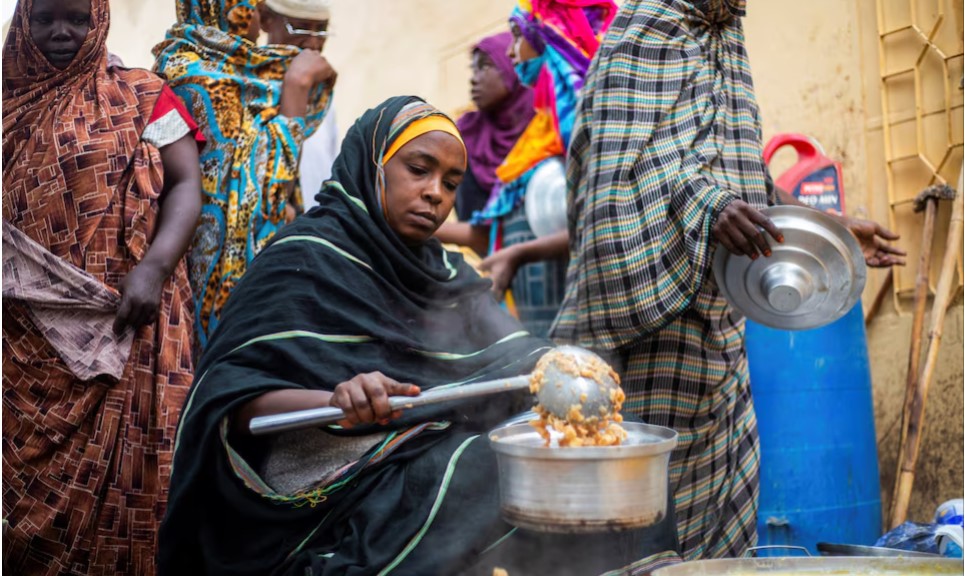 A Sudanese woman from a community kitchen run by local volunteers distributes meals for people affected by conflict and extreme hunger. Photo: (File/REUTERS/Mazin Alrasheed)
A Sudanese woman from a community kitchen run by local volunteers distributes meals for people affected by conflict and extreme hunger. Photo: (File/REUTERS/Mazin Alrasheed)
Starving toddlers
In April, the UN World Food Programme (WFP) delivered 259 metric tonnes of aid to Zamzam. The first WFP delivery there in nearly a year, it was enough to supply a small fraction of the people in need in the camp.
The aid arrived too late for Mastora Salem’s 18-month-old daughter, Amani.
Salem, 37, was pregnant when she fled another internal displacement camp caught in the crossfire of war. She arrived in Zamzam in April with her husband and seven children. Aid workers used a colour-coded band to measure the tiny upper arms of Salem’s 18-month-old twins, Iman and Amani, and their 4-month-old sister, Mozon. For each, the colour was red: They were severely malnourished and near death. Amani died that same month.
The IPC’s Sudan working group did not meet the May deadline it set for publishing a new report. Sudanese officials resisted attempts to update the analysis and assess whether areas were in famine, according to internal IPC communications reviewed by Reuters.
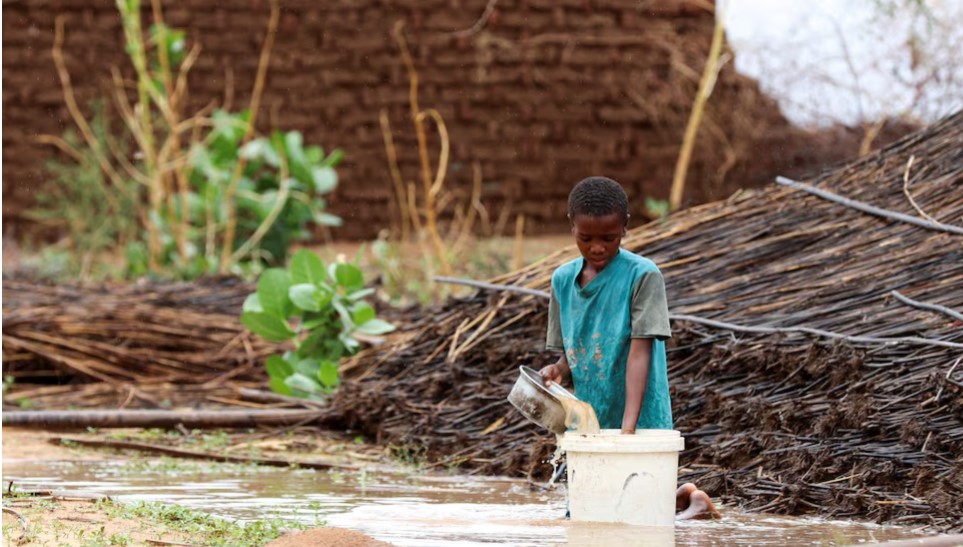 A displaced Sudanese child pours water at Zamzam camp in North Darfur on August 1, 2024. (Photo: File/REUTERS/Mohamed Jamal Jebrel)
A displaced Sudanese child pours water at Zamzam camp in North Darfur on August 1, 2024. (Photo: File/REUTERS/Mohamed Jamal Jebrel)
Famine risk
In June, the IPC published an update that named Zamzam as one of 14 areas in Sudan at “risk of famine” within the next few months. The report did not mention the MSF nutrition survey findings. The government cried foul anyway.
“The IPC report is flawed because all the numbers mentioned in it are based on data that are impossible to collect in areas controlled by the Rapid Support Forces,” Sudan’s agriculture minister, Abubakr al-Bushra, told Reuters.
An IPC finding that an area is at risk of famine means there is a reasonable probability of it happening. But a risk designation stops short of triggering a formal famine review – a key step meant to ensure objectivity when the IPC analyzes areas at the extreme end of its classification scale.
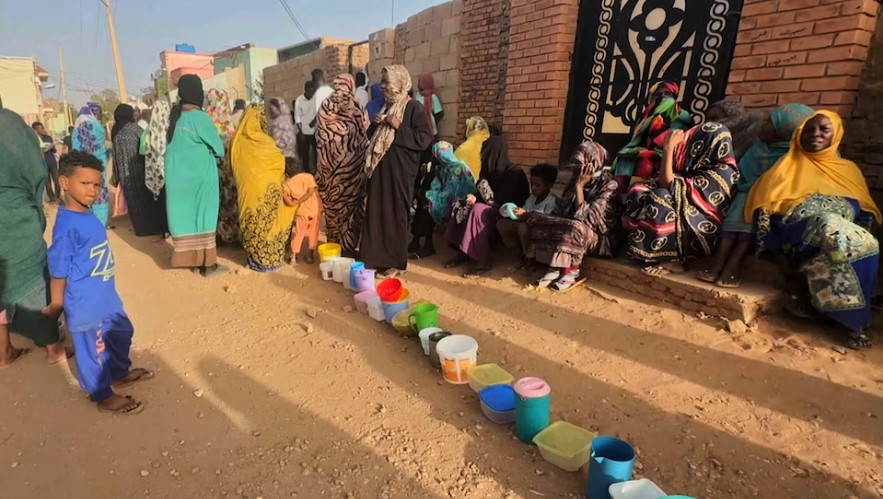 Residents wait to collect food in containers from a soup kitchen in Omdurman, Sudan on March 11, 2024. (Photo: File/REUTERS/El Tayeb Siddig)
Residents wait to collect food in containers from a soup kitchen in Omdurman, Sudan on March 11, 2024. (Photo: File/REUTERS/El Tayeb Siddig)
An intervention
This is when the Americans intervened. The Famine Early Warning Systems Network, known as FEWS NET, conducts food security analyses for U.S. policymakers and is one of the IPC’s 19 member organizations. FEWS NET had done its own independent analysis and concluded Zamzam and two other internal displacement camps were in famine.
Because of its relationship with the IPC, FEWS NET was obliged to seek agreement from the IPC’s Famine Review Committee before going public with its famine finding. On the same day the IPC published its June analysis, FEWS NET sought that review.
The IPC’s Famine Review Committee reviewed the FEWS NET and working-group reports and published its own findings on August 1. It confirmed that a famine was underway in Zamzam.
At the heart of the IPC’s Zamzam famine determination: the MSF data that Sudanese officials had opposed using. Famine Review Committee members found that data to be statistically valid.
Also cited by the IPC committee: a satellite imagery analysis by Reuters, published in June. The news agency’s report showed burial grounds expanding rapidly around Zamzam and other areas with extreme malnutrition. The committee found the Reuters analysis, combined with the MSF malnutrition and mortality statistics, provided a “convergence of evidence” that Zamzam was in famine.
All told, it took nearly seven months to confirm the catastrophe that MSF doctors had identified in January.
The IPC noted in a statement to Reuters that despite the technical hurdles it faced at the time, it still issued warnings about deteriorating conditions in Sudan.
“Stakeholders should not wait for a famine to be classified to act at scale in such a dire situation,” Lopez said.
While the IPC’s working group debated and the international community failed to ramp up its response, hundreds more died.
Reuters reporters have continued using high-resolution optical and radar satellite imagery to examine activity in the burial grounds around Zamzam. They identified more than 1,200 new graves dug at seven cemeteries between June 2023 and November 2024.
This tally likely undercounts the camp’s graves, because it is impossible to know if the images depict every burial, especially those of small children. MSF estimated in February that 13 children were dying every day.
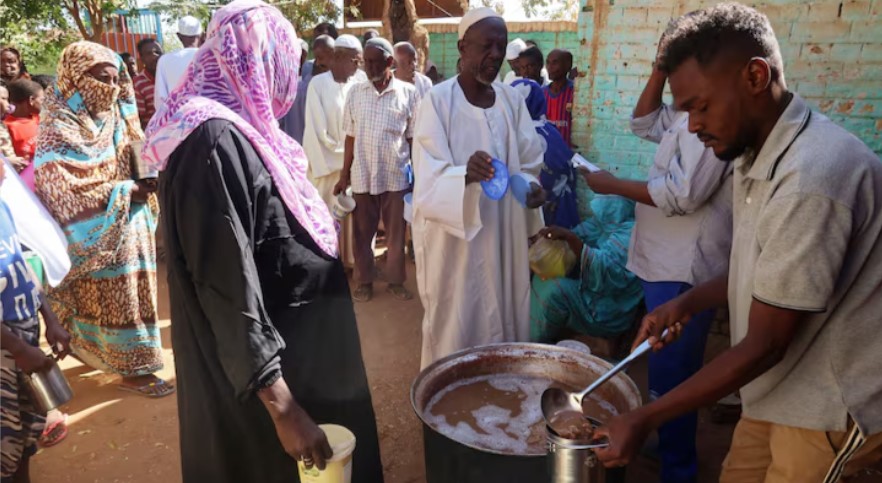 Volunteers distribute food to residents and displaced people in Omdurman, Sudan on March 8, 2024. (Photo: File/REUTERS/El Tayeb Siddig)
Volunteers distribute food to residents and displaced people in Omdurman, Sudan on March 8, 2024. (Photo: File/REUTERS/El Tayeb Siddig)
A growing toll
Reuters used satellite imagery to reveal steady growth in new graves as conditions worsened at the Zamzam camp. An average 1.5 new mounds appeared per day in December 2023. Since August, when the IPC found the area to be in famine, the rate has grown to four each day.
Lopez said the IPC will now require that its technical experts take over government-headed analyses within two weeks of when evidence points to famine and there are exceptional circumstances, such as government interference or delay. The guidance for the new rule cites “the urgency to inform decision-making to halt starvation and widespread deaths.”
Less than a month after the IPC found Zamzam to be in famine, Salem’s second twin, Amani’s sister Iman, died there. Salem broke into tears in September while describing how her daughter wasted away.
“Her face was swollen,” she said. “Her feet were swollen. She looked like there was no blood in her body anymore.” Such swelling is a tell-tale sign of extreme malnutrition.
In November, Salem gave birth to another set of twins. Neighbours are collecting donations to help her and the newborns.
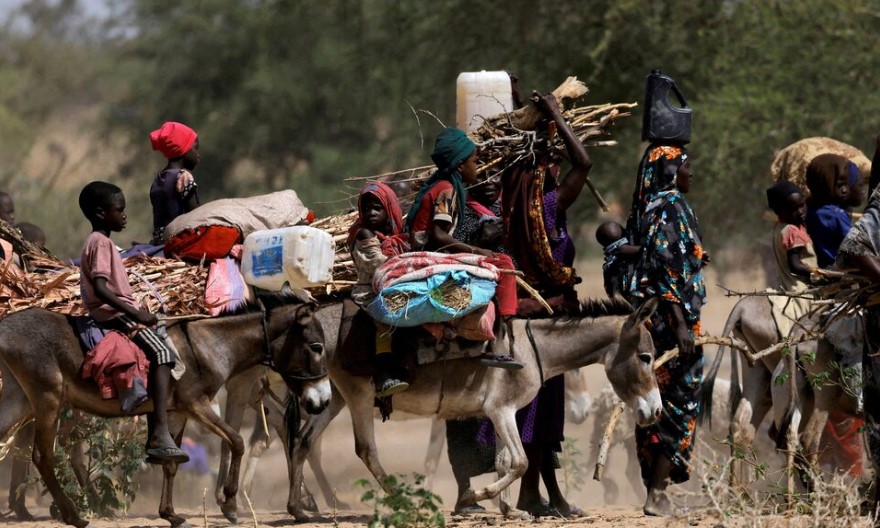 Sudanese refugees who fled the violence in the Darfur region looking for space to temporarily settle near the border between Sudan and Chad on May 8, 2023. (Photo: FileRE/REUTERS/Zohra Bensemra)
Sudanese refugees who fled the violence in the Darfur region looking for space to temporarily settle near the border between Sudan and Chad on May 8, 2023. (Photo: FileRE/REUTERS/Zohra Bensemra)
Manasek Abdullah, 18, lost her 18-month-old son Mohammed Noureen to malnutrition in July. They and her other toddler, Adam, arrived in Zamzam in April after fleeing al-Fashir. Soon after, Mohammed’s feet and face began to swell from malnutrition.
Abdullah now struggles to keep Adam alive. She can’t afford the high prices of the food sold at Zamzam’s market. They survive on food donated by neighbours. Or they eat tree leaves that she gathers and boils into a green paste. She fears she will lose Adam, too. He was malnourished and had blood in his stool in August.
“I don’t know what the reason is, but the place is full of flies and diseases,” she said. In November, he was diagnosed with malaria.
Humanitarian organizations say they need $2.7 billion to keep up with needs in Sudan this year but that about $1 billion remains unfunded.
Logistical hurdles
These organisations also have struggled to overcome logistical hurdles that make it extraordinarily hard to get relief shipments to Zamzam. In an Oct. 18 joint statement about the worsening crisis, the United States, Britain, France and others cited a “systematic obstruction of local and international humanitarian efforts” by the RSF and the SAF.
Convoys and aid workers have come under attack by warring parties. The Sudanese government has used bureaucracy to stymie aid efforts, denying or delaying visas for relief workers and refusing to grant them permits to move shipments, according to minutes of logistical meetings held by UN and other aid organisations.
The combatants blame each other for the obstacles. RSF advisor Mohamed Mukhtar told journalists in Nairobi on November 18 that the RSF has sought to open border crossings but that the army is “insisting on starving the Sudanese people.”
Reuters has previously reported that the RSF has looted aid hubs and blocked aid deliveries to the hungry. The SAF did not respond to questions for this report.
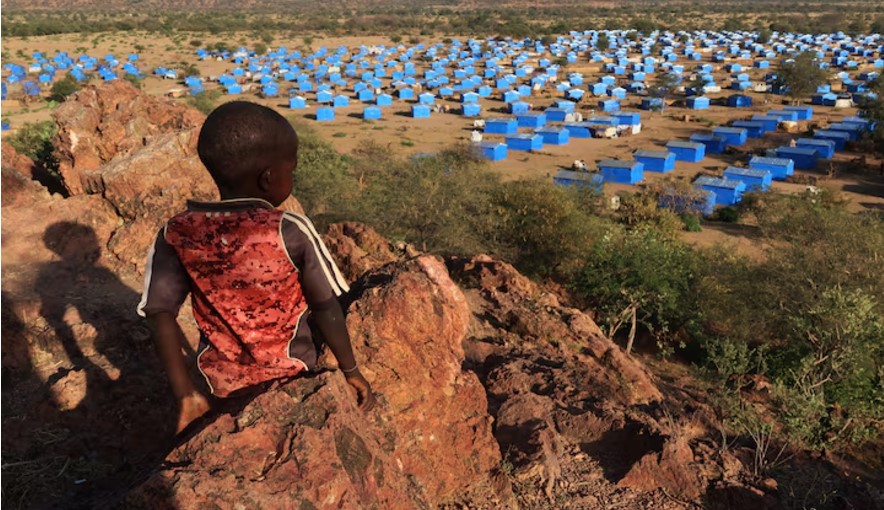 A boy sits atop a hill overlooking a refugee camp near the Chad-Sudan border on November 9, 2023. (Photo: File/REUTERS/El Tayeb Siddig)
A boy sits atop a hill overlooking a refugee camp near the Chad-Sudan border on November 9, 2023. (Photo: File/REUTERS/El Tayeb Siddig)
Roadblocks to relief
Armed checkpoints, flooding, warfare, and threats against humanitarian aid convoys make relief shipments perilous inside Sudan. The government restricts border crossings and requires travel permits. That limits the flow of aid into and within the country. UN agencies obey the restrictions in recognition of Sudan’s sovereignty.
Before the war, the WFP stored aid at warehouses across Sudan in anticipation of the lean season between harvests. After hostilities broke out, widespread looting slashed its stockpiles.
In May 2023, anticipating warfare in al-Fashir, the WFP took a pre-emptive step. It delivered all the food from its warehouses there – two months’ worth of assistance – to more than 180,000 people in North Darfur. Some went to Zamzam.
It would be almost a year before WFP delivered more aid to the camp.
As the government continued to resist UN aid shipments via Chad, the WFP procured 31 metric tons of nutritional supplements in February and asked MSF to distribute them in Zamzam and two nearby camps. But it wasn’t until April that MSF was able to deliver the aid because of logistical hurdles, the WFP said.
More aid made it to Zamzam in subsequent weeks, but transport has proven difficult since then. In August, a convoy of aid trucks set out for North Darfur and got stuck on muddy roads amid the rainy season. The convoy never arrived.
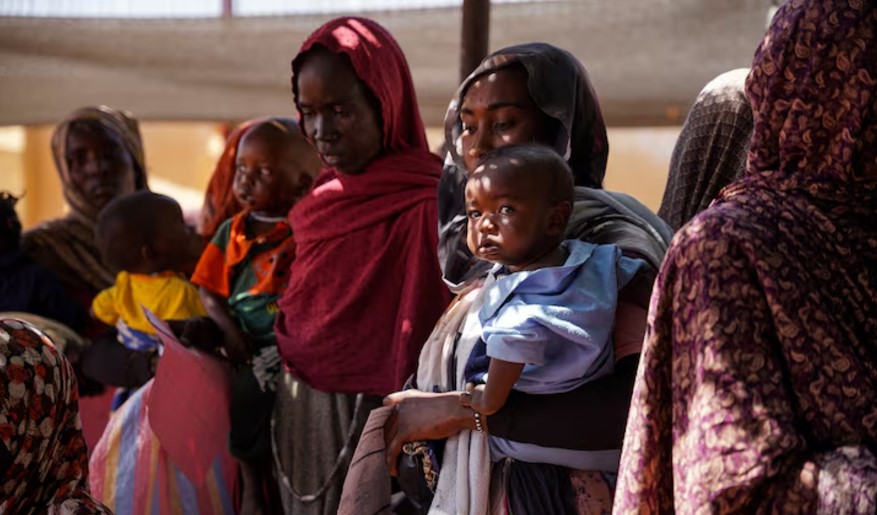 Women and babies at the Zamzam displacement camp, close to El Fasher in North Darfur, Sudan. (Photo: File/MSF/Mohamed Zakaria/Handout via REUTERS)
Women and babies at the Zamzam displacement camp, close to El Fasher in North Darfur, Sudan. (Photo: File/MSF/Mohamed Zakaria/Handout via REUTERS)
The WFP said it still was able to feed 100,000 people in Zamzam in September and October with food it sourced locally. On November 22, the WFP announced a convoy reached Zamzam with aid for 12,500 people.
That aid enabled MSF to resume treating children for malnutrition, said Michel-Olivier Lacharité, MSF’s head of emergency operations. But the sporadic supplies are not enough, he said. And the latest shelling has thrown medical care into disarray. Some MSF staff evacuated earlier this week.
Al-Bushra, the agriculture minister, said the government has designated eight aid routes for the transport of goods into and across the country. It also has authorized the use of several border crossings and airports for aid shipments and agreed to keep the Adre crossing open until February.
Similar promises the government made in March resulted in little improvement, however, and the WFP said this week that fighting is disrupting aid delivery.
The IPC’s finding of famine in Zamzam in August came late, said Eric Reeves, who heads Team Zamzam, a charity providing aid at the camp. And given the difficulty of consistently getting aid in, the IPC warning “has made absolutely no difference to the lives of the people of Zamzam.”
A scholar who has studied Sudan for 26 years, Reeves said the Sudan hunger crisis is greater than any the world has seen in decades.
“The dying from starvation will not stop until there is full humanitarian access, and even then it will be difficult to forestall the deaths of many hundreds of thousands,” he said. “Once underway, true famine is extremely difficult to bring to an end.”
Top Stories Today
Reader Comments
Trending
